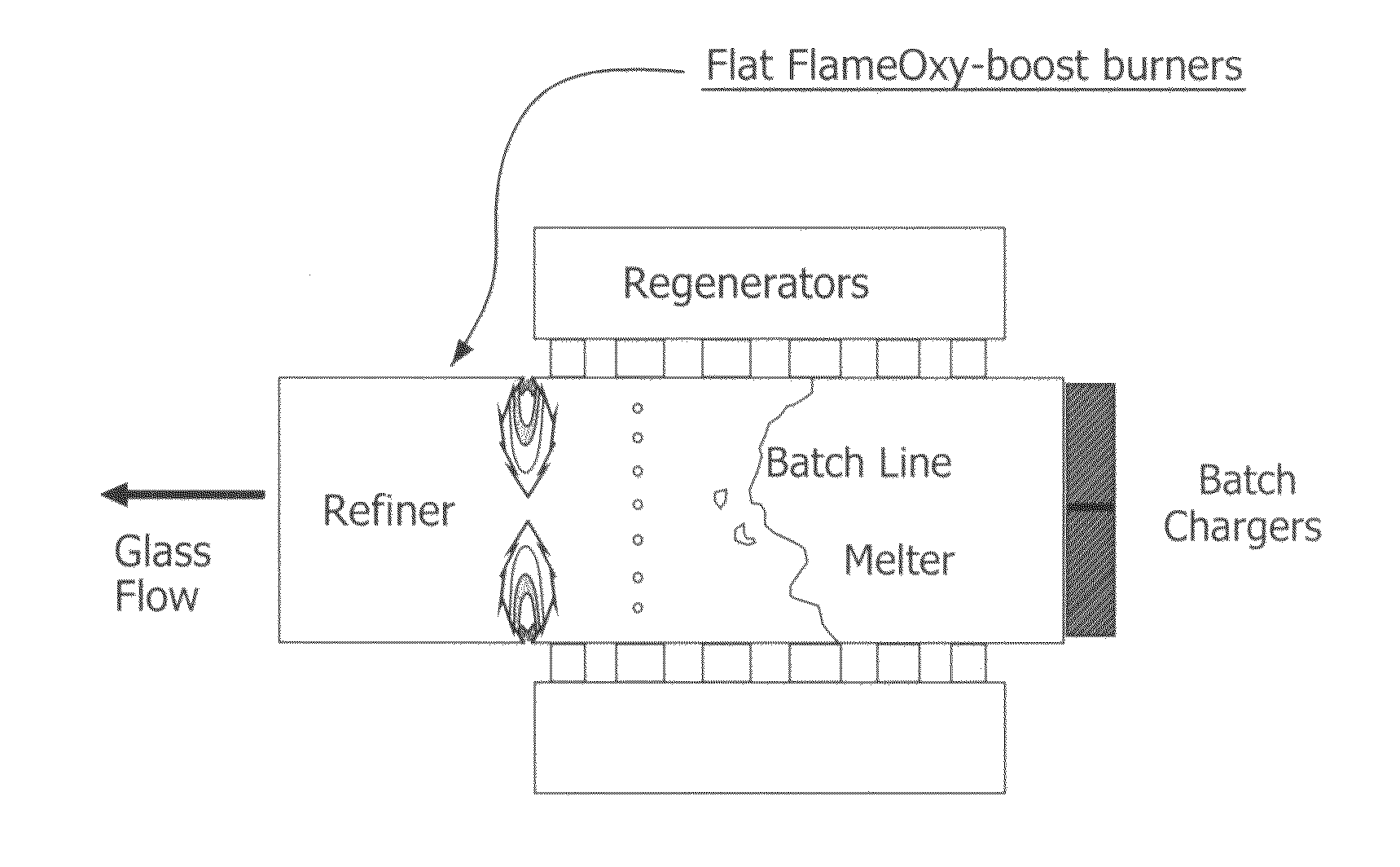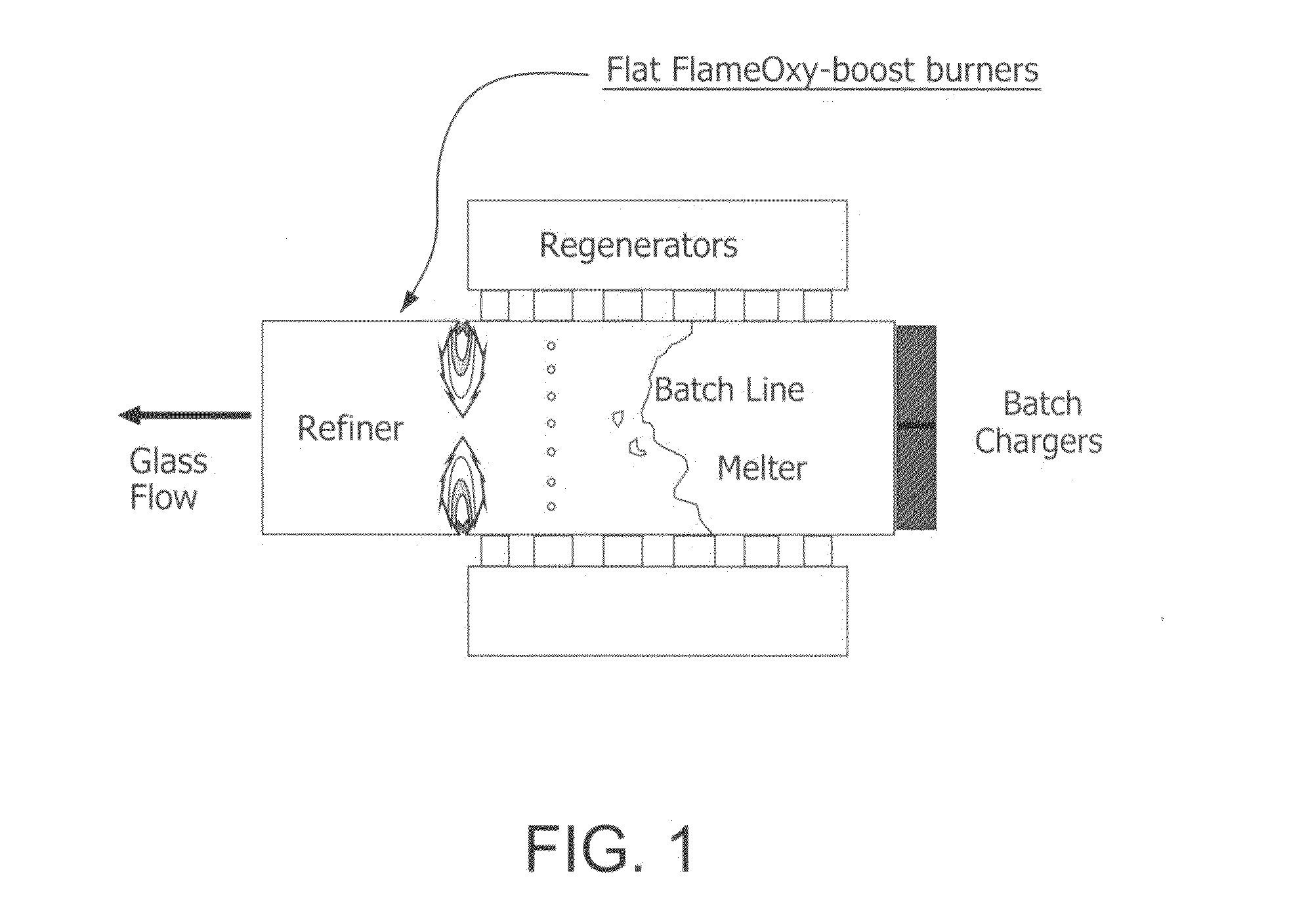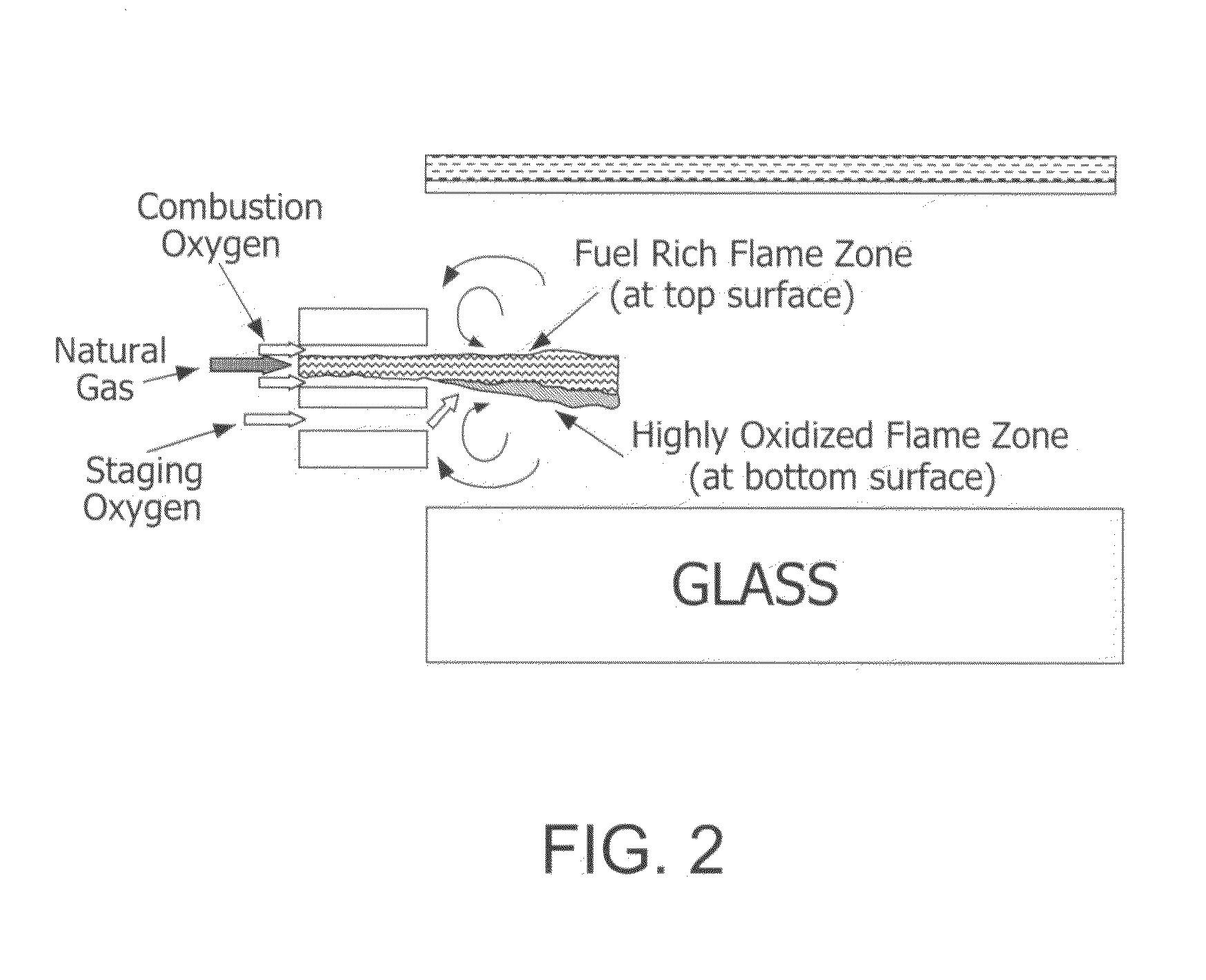Furnace and Process for Controlling the Oxidative State of Molten Materials
a technology of oxidative state and molten materials, which is applied in the direction of manufacturing tools, furniture, lighting and heating apparatus, etc., can solve the problems of unsatisfactory effects, unsatisfactory and/or convenient effects, and high purity of base materials, so as to improve the quality of molten materials and improve the clarity of float glass
- Summary
- Abstract
- Description
- Claims
- Application Information
AI Technical Summary
Benefits of technology
Problems solved by technology
Method used
Image
Examples
example 1
[0098]is a baseline example that represents the conventional air-firing float glass furnace with a firing rate of 46.89 MW (160 MMBTU / hr) and a pull rate of 670 MTPD of a soda-lime-silicate glass. FIG. 4 shows the simulated temperature profile in the mid-plane of the furnace (the y axis is Temperature in degrees Celsius and the x axis corresponds to the length of the furnace). As shown, the temperature is the highest in the middle section of the furnace, around the port 5 and 6. Because of this temperature distribution, natural convection exists in the glass melt, and as a result there is a spring zone just downstream port 6 (as illustrated in FIG. 5 wherein the ports correspond to the rectangular openings above the glass melt and are numbered from left to right). Fe2O3 (Fe3+) entered the charge end (the left-hand side of FIGS. 4 through 7) at a mass fraction of about 0.03%. As the temperature is increased, Fe2O3 is reduced to FeO (Fe2+) and O2 with the highest FeO and O2 concentrat...
example 2
[0099]represents on example with the oxygen-fuel burner is installed above the spring zone of the glass melt (as illustrated in FIG. 6). The burner is operated with a stoichiometric ratio of 200%. The additional oxygen from the oxygen-fuel burner provides an oxygen rich environment above the spring zone and helps to prevent the escape of the oxygen from the melt to combustion space above the melt. As a result, the glass FeO concentration at the furnace exit is reduced by about 35% when compared to the baseline example (Example 1).
example 3
[0100]represents a case where the oxygen burner is installed over the batch (as illustrated in FIG. 7). Because the lower temperature in the batch region, iron is more thermodynamically stable in its Fe3+ state, (and as a result oxygen concentration in the glass is relatively low), the reaction between Fe3+ and Fe2+ is slow, and the thermally activated diffusion of O2 into the glass melt is very small. Therefore the additional oxygen in the atmosphere does not provide any significant benefit in controlling the oxidation of the glass. The simulation shows the FeO concentration in the final production does not significantly change relative the example where there is no oxygen-fuel burner.
[0101]These examples show that desirable results in accordance with this invention can be achieved by locating an oxygen-fuel burner over the refining zone, and in particular, adjacent to or near the spring-zone of the furnace.
PUM
| Property | Measurement | Unit |
|---|---|---|
| velocity | aaaaa | aaaaa |
| transparent | aaaaa | aaaaa |
| transparent | aaaaa | aaaaa |
Abstract
Description
Claims
Application Information
 Login to View More
Login to View More - R&D
- Intellectual Property
- Life Sciences
- Materials
- Tech Scout
- Unparalleled Data Quality
- Higher Quality Content
- 60% Fewer Hallucinations
Browse by: Latest US Patents, China's latest patents, Technical Efficacy Thesaurus, Application Domain, Technology Topic, Popular Technical Reports.
© 2025 PatSnap. All rights reserved.Legal|Privacy policy|Modern Slavery Act Transparency Statement|Sitemap|About US| Contact US: help@patsnap.com



